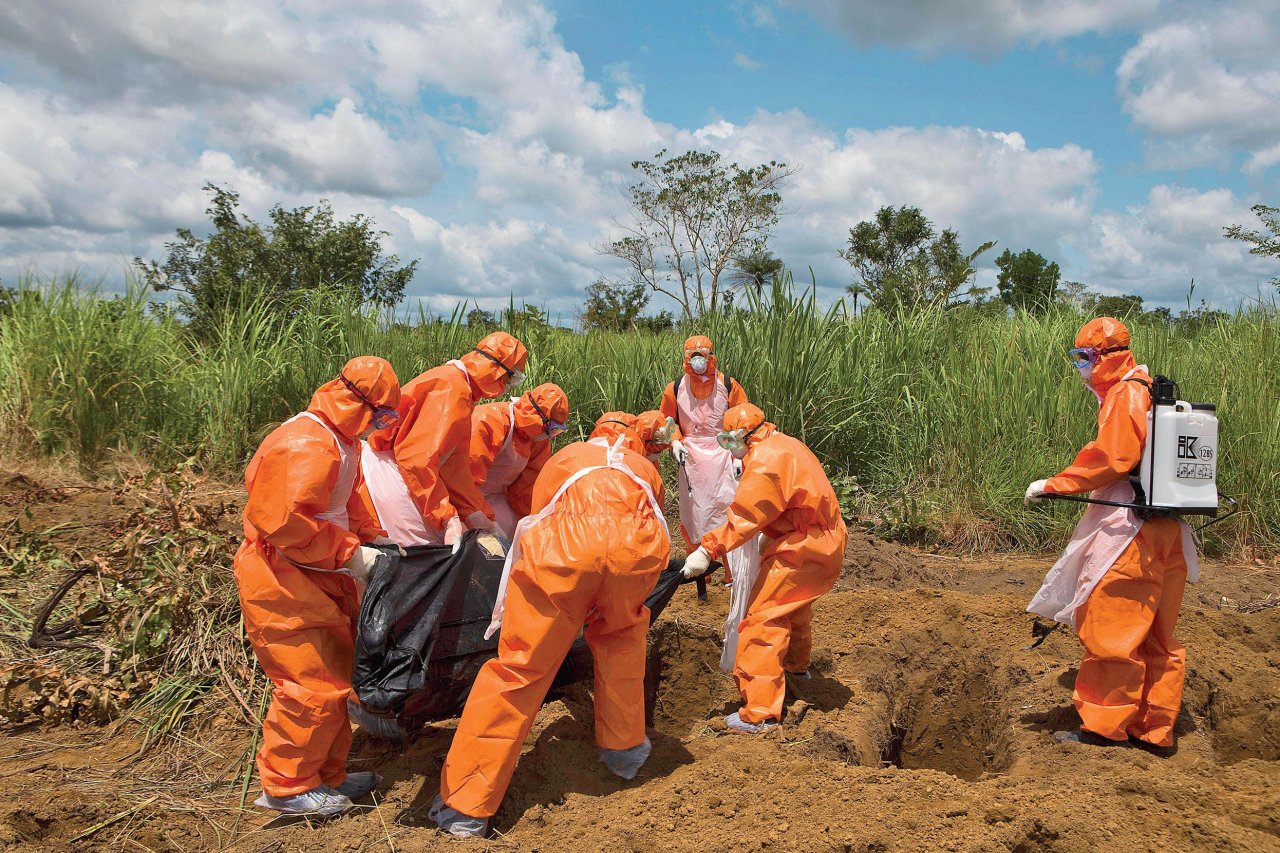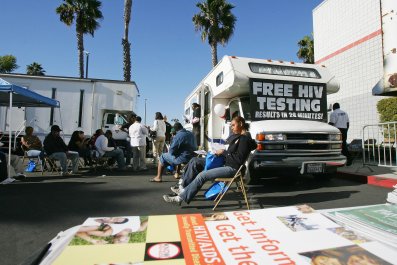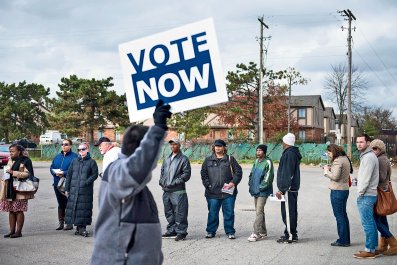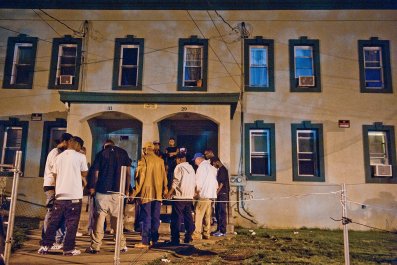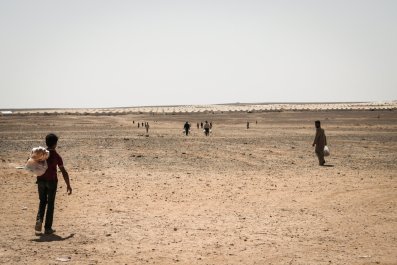Ebola is one of the deadliest viruses on the planet: It kills about half of those it infects—and many more in some circumstances. According to the World Health Organization, a staggering 90 percent of people infected during the outbreak in Congo in 2003 died. The death toll from a major outbreak of the Ebola virus disease in the U.S. would be appalling. And by all accounts, it's a pretty awful way to die.
That is why when the public recently learned a patient in the United States had been diagnosed with the deadly virus—and had spent several days outside of quarantine, to boot—low-level hysteria erupted. Twenty-seven percent of Americans are either "very worried" or "somewhat worried" that they or someone in their family will catch Ebola, according to a poll conducted by CNN.
But according to the Centers for Disease Control and Prevention (CDC), Ebola poses "no significant threat" to the United States. That's primarily because it isn't easy to catch Ebola. Unlike, say, the plague, which spreads easily via tick bites—or swine flu, bird flu and SARS, which are airborne—transmission of Ebola requires direct contact with the bodily fluids of an infected person: blood, vomit, feces, semen, saliva or sweat. And only someone displaying symptoms can transmit the virus; those infected but not showing symptoms are not contagious.
The other reason Ebola isn't a likely concern in the U.S. is that the CDC is very well prepared, with the authority and infrastructure to deploy multiple levels of protection against outbreaks of infectious diseases, all that based on a concept that is ancient, simple and effective: quarantine.
The strategy is simple: Keep sick and potentially sick people away from healthy people. A quarantine was first imposed in the Republic of Dubrovnik-Ragusa in 1377 to fight the spread of plague. The Republic of Venice established the first plague hospital, or lazaretto, on the island of Santa Maria di Nazareth in 1423. The word itself derives from the Italian quaranta giorni—40 days, the length of time the republic required ships to sit at anchor before docking. Quarantines also helped stop the spread of cholera in the 19th century and influenza in the 20th century. And it will almost certainly be an effective way to shut down Ebola, says Ross Hammond, director of the Center on Social Dynamics and Policy at the Brookings Institution, a nonprofit think tank based in Washington, D.C.
The CDC can quickly identify, locate and monitor individuals who may have been exposed to the virus and monitor them. It also has the regulatory authority to impose quarantines. That's not as bad as it sounds for those infected, because for a quarantine to work, "you want to make people comfortable," says Derek Cummings, an assistant professor at the Department of Epidemiology at Johns Hopkins University, "so it's in their self-interest to participate."
Past outbreaks have shown that the more content people are in quarantine, the less likely they are to attempt to escape it. During the SARS epidemic in Hong Kong and Singapore in 2003, for instance, governments booked whole hotels for quarantined individuals, where they received room service.
That is not to say that being quarantined is always a comfortable prospect. In Sierra Leone and Guinea, for example, fear has made grain ships reluctant to dock in contaminated ports, which has exacerbated the food shortages there.
Quarantines could also be applied at a state or even national level: An entire subsection of the CDC, the Division of Global Migration and Quarantine (DGMQ), is ready to spring into action to isolate individuals entering the country. DGMQ maintains Quarantine Stations at 20 major ports of entry and land border crossings, and can hold travelers and goods at these stations to slow the introduction of the disease. In extreme cases, the CDC can step in at the state level and stop interstate traffic and the secretary of health and human services has the authority to close international borders.
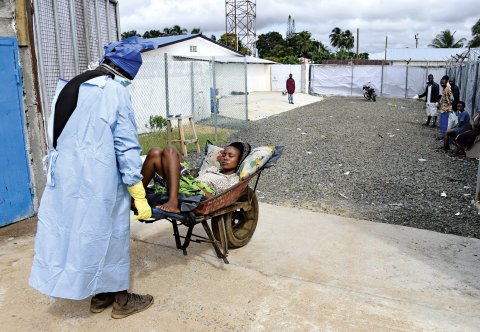
If an epidemic became widespread, the CDC would push for the implementation of what Hammond refers to as "social distancing." Like quarantines, social distancing is a set of practices designed to prevent contact between sick and healthy individuals. The difference, however, is that social distancing is more globally applied. It can range from "light touches" such as encouraging telecommuting to more restrictive measures like travel alerts and warnings, all the way up to shutting down public transportation and closing airports and schools.
"Social distancing measures are entrenched in federal, state and local laws across the U.S.," says James Hodge, a public health law expert with the Network for Public Health Law and professor of law at the Sandra Day O'Connor College of Law at Arizona State University. Hodge says tuberculosis provides a great example of the way the U.S. successfully employs social distancing measures to combat disease. "We have hundreds or thousands of cases across the U.S. at any given time," he says, but, due to routine social distancing, we have yet to experience a major outbreak of the disease in this century. "When we have outbreaks of certain infections in schools across the United States, particularly elementary schools," Hodge says, "we will use social distancing techniques to distance those students who may be the most susceptible to infection—let's say, for example, they weren't vaccinated."
The economic costs of such measures can be steep, however. During the swine flu epidemic in 2009, Hammond found that a "one-month-long school closure" would decrease U.S. gross domestic product by $10 billion in "a low cost estimate." On top of that, closing schools would also cut into America's supply of health care workers: About one in five would be stuck at home taking care of their kids instead of at work helping to end the epidemic, the study found. And measures that restrict peoples' movement almost always require legal action—and, in the U.S., laws designed to promote social distancing are a patchwork of federal, state and local regulations, making it very difficult for the CDC to enact uniform social distancing policy.
Nevertheless, the United States is prepared for this fight. What is perhaps the most important difference between the U.S. and the West African countries that have suffered so severely during the current Ebola outbreak is how heavily the CDC has invested in private medical infrastructure to counter infectious diseases in recent years. In 1995, a landmark scientific report was published by the National Academy of Sciences, titledEmerging Infections: Microbial Threats to Health in the United States. "If the National Academy ever had a best-seller, that was it," says James LeDuc, who left the directorship of the CDC's Division of Viral and Rickettsial Diseases in 2006 to research infectious diseases and vaccines at the Institute for Human Infections and Immunity at the University of Texas Medical Branch.
Emerging Infections changed the way the U.S. thought about disease. The report "surveyed the horizon and the recent history of infectious diseases and how the world has changed," LeDuc says. "Growth of the global population, the interconnection between places, people traveling much more frequently and rapidly"—combined, these things meant that diseases could spread much wider and faster than ever before in human history. "You could be infected with anything, from anywhere in the world, in 24 to 48 hours," LeDuc says.
"Nobody had thought about quarantine for a hundred years," LeDuc said. This publication changed that. Starting in 1995, the CDC strategically positioned drugs and medical equipment, boosted the network of laboratories equipped to carry out diagnostic testing for Ebola, and trained domestic hospitals to prepare for large numbers of infectious disease patients, LeDuc says. "Those investments were made and continue to be sustained at a robust level." Sadly, those nations in West Africa that have suffered the worst have suffered mostly because they are poor.
"Ebola is spreading now in places that are highly resource-constrained," says Cummings. And doctors and public health professionals agree that the best way to stop Ebola from spreading to the United States is to stop its spread abroad. Closing off borders will discourage talented, trained medical professionals from traveling to the worst-affected regions, which will simply allow the disease to spread further.
Correction: An earlier quotation in this article said the U.S. experiences "hundreds of thousands" of cases of tuberculosis any any given time, not "hundreds or thousands."



